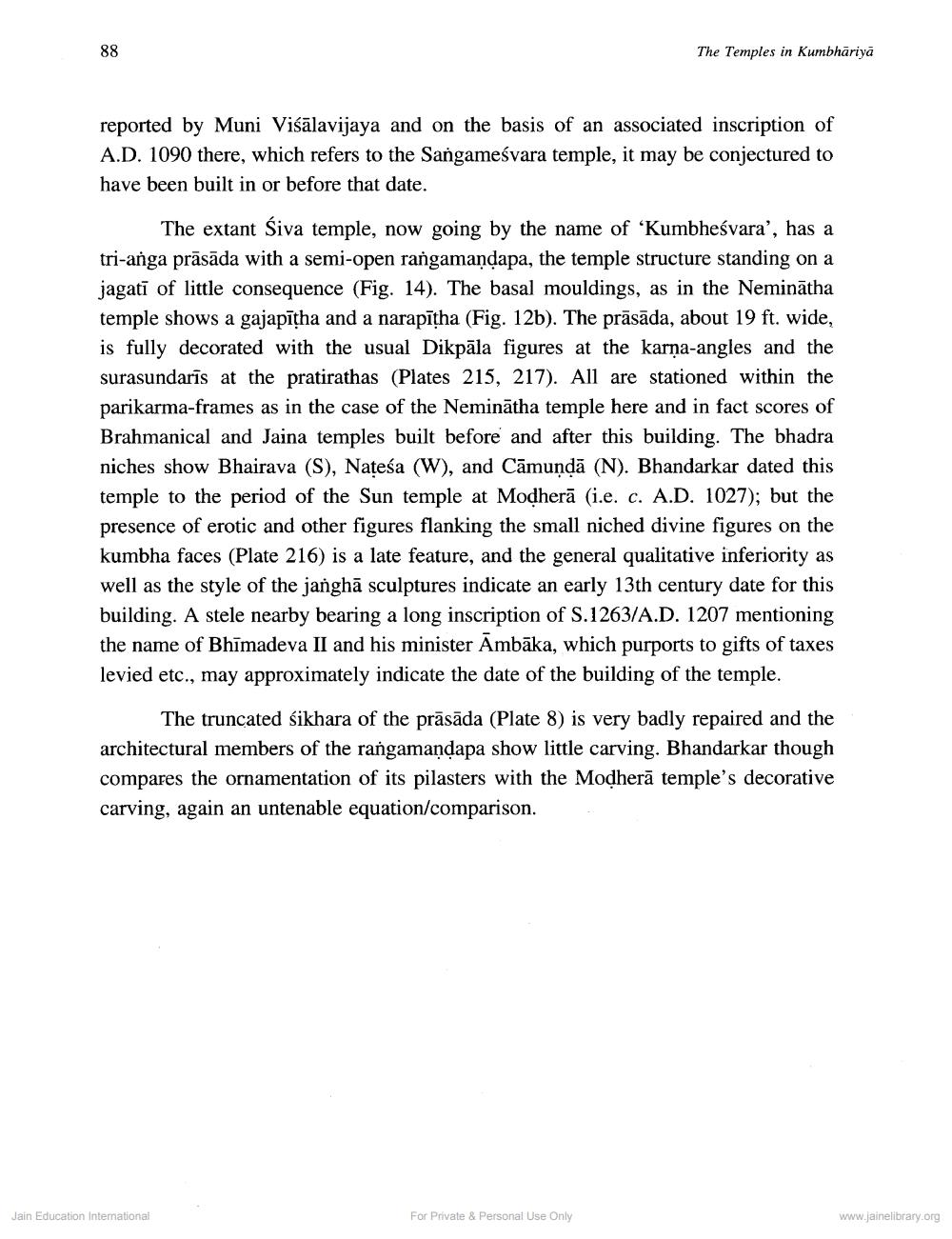________________
88
The Temples in Kumbhāriya
reported by Muni Viśālavijaya and on the basis of an associated inscription of A.D. 1090 there, which refers to the Sangameśvara temple, it may be conjectured to have been built in or before that date.
The extant Siva temple, now going by the name of 'Kumbheśvara', has a tri-anga prāsāda with a semi-open rangamandapa, the temple structure standing on a jagati of little consequence (Fig. 14). The basal mouldings, as in the Neminātha temple shows a gajapītha and a narapītha (Fig. 12b). The prāsāda, about 19 ft. wide, is fully decorated with the usual Dikpāla figures at the karma-angles and the surasundarīs at the pratirathas (Plates 215, 217). All are stationed within the parikarma-frames as in the case of the Neminātha temple here and in fact scores of Brahmanical and Jaina temples built before and after this building. The bhadra niches show Bhairava (S), Natesa (W), and Cāmundā (N). Bhandarkar dated this temple to the period of the Sun temple at Modherā (i.e. c. A.D. 1027); but the presence of erotic and other figures flanking the small niched divine figures on the kumbha faces (Plate 216) is a late feature, and the general qualitative inferiority as well as the style of the janghā sculptures indicate an early 13th century date for this building. A stele nearby bearing a long inscription of S.1263/A.D. 1207 mentioning the name of Bhīmadeva II and his minister Ambāka, which purports to gifts of taxes levied etc., may approximately indicate the date of the building of the temple.
The truncated śikhara of the prāsāda (Plate 8) is very badly repaired and the architectural members of the rangamandapa show little carving. Bhandarkar though compares the ornamentation of its pilasters with the Modherā temple's decorative carving, again an untenable equation/comparison.
Jain Education International
For Private & Personal Use Only
www.jainelibrary.org




